Starting a blog is not difficult these days. But most people don’t know how to start a food blog and make money online in 2025.
In this in-depth guide, we will help you, choose your food blog’s niche, create a food blog in wordpress, write food blog posts, and promote and monetize your food blog to make money.
By the end of this tutorial, you’ll be able to start a successful food blog from the ground up.
If you have any questions along the way, just drop a comment and I will help you out.
So let us jump right in.
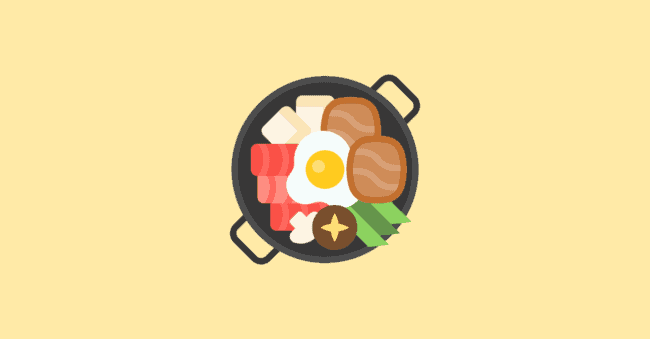
How to Start a Food Blog in 7 Steps
- Define Your Food Blogging Goals
- Choose a Food Niche
- Pick & Register a Blog Domain Name
- Setup WordPress
- Write & Publish Blog Posts
- Promote Your Food Blog
- Monetize & Make Money
1. Define Your Food Blogging Goals
The first step to starting your food blog is to define your blogging goals. This will not only help you design your blog but will also help you create high-quality content and plan how you will monetize your blog in the future.
Some common food blogging goals are:
- to share recipes
- to document your culinary adventures
- to photograph and review restaurants
- to promote local food businesses
- to teach people how to cook
- to provide information on food and nutrition
- to write about food news and trends
These are just some examples of food blogging goals. You may have other goals for your blog. But it is important to have a clear focus for your blog from the start. This will make it easier for you to choose a niche, design your blog, write content that appeals to you, and most importantly makes money.
What is a Food Blog?
A food blog is a website or blog dedicated to all things food. Food blogs typically feature recipes, restaurant reviews, information on nutrition, and photo galleries of dishes. There are many different types of food blogs with different focuses.
Why Start a Food Blog?
There are many reasons to start a new blog. Some people start food blogs to share recipes, others do it to document their culinary adventures, and still, others do it to promote local food businesses. But the most common reason people start food blogs is to make money.
With a little effort, you can turn your passion for food into a full-time income. How much money you can make from your food blog will depend on several factors, including the niche you choose, the quality of your content, and the amount of traffic you get to your site.
But if you’re serious about making money from your food blog, it is possible to earn a full-time income from it. Many food bloggers are already doing it!
The benefits of starting a food blog include:
- You can make money from your food blog.
- You can get free products from brands.
- You can share your recipes with the world.
- You can connect with other foodies.
- You can promote local food businesses.
- You can teach people how to cook.
How much money can you make from Food blogging?
The median ad income of a food blog with 100 posts is $2815 per month. Your earning potential will be greater if you have more blog articles. You may also make more money by selling digital goods and through affiliate marketing. Affiliate marketing-monetized food blogs can make more than $15,000+ per month. The recipe blog Pinch of Yum made $95,197 in a single month.
2. Choose a Food Niche
The next step to starting your food blog is to choose a niche. A niche is a specific topic or focus for your blog. When choosing a niche for your food blog, there are a few things you should keep in mind.
Why choose a niche?
First, you should choose a niche that you’re passionate about. This will make it easier for you to write content and promote your blog. Secondly, you should choose a niche that is not too broad. For example, if you’re passionate about food, you may be tempted to start a general food blog. But this would be a mistake.
You might be a foodie who likes everything. But a general food blog would be competing with millions of other food blogs out there. It would be very difficult to stand out in this crowded field.
Instead, you should choose a more specific niche, such as gluten-free cooking or healthy eating. This will make it easier for you to attract an audience and make money from your blog.
Finding Your Ideal Niche
The best way to find your ideal food niche is to think about the topics you’re most interested in. What are the foods you love to eat? What are the recipes you’re most proud of? What are the food businesses you admire?
Here are some of the popular food niches for a food blog:
- Vegan
- Baking
- Keto
- Meal Planning
- Healthy Eating
- Wine
- Coffee/Tea/Beverages
- Nutrition
- Paleo
- Snacks
- Party Food
- Desserts
- Street Food
- Restaurant Reviews
- Cooking Tips
- Pot luck Recipes
- Cultural Cuisines
- Hot Pot
Examples of Food Blogs
Sometimes looking at other food blogs will help inspire ideas of your own. Here are some of the more popular food blogs:
[auto-list-number] The Minimalist Baker
The blog focuses on recipes to create savory and sweet dishes requiring ten ingredients or less and 30 minutes or less to prepare.
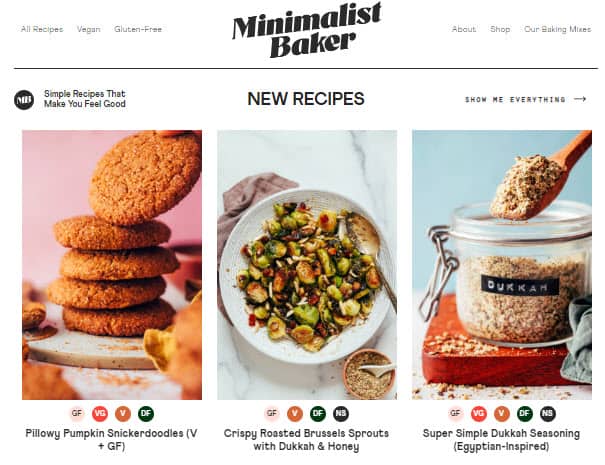
[auto-list-number] Oh She Glows
The blog is all about vegan recipes, meal ideas, and tips for leading a healthy lifestyle.

[auto-list-number] Pinch of Yum
A food blog with delicious and healthy recipe ideas, as well as tips on how to make money from your food blog.
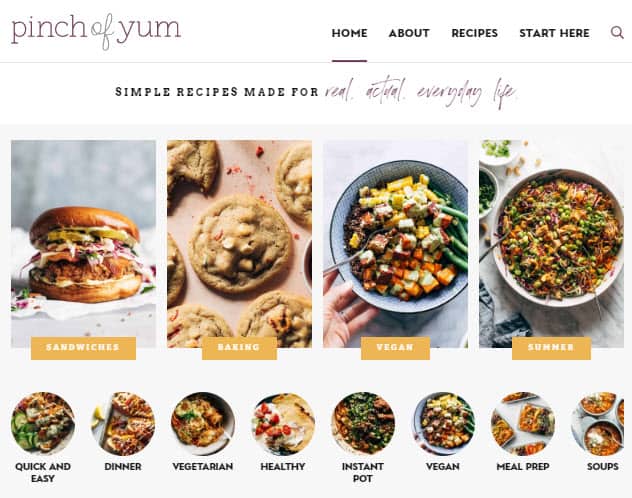
[auto-list-number] Smitten Kitchen
A food blog with recipes for everything from quick weeknight dinners to elaborate desserts.
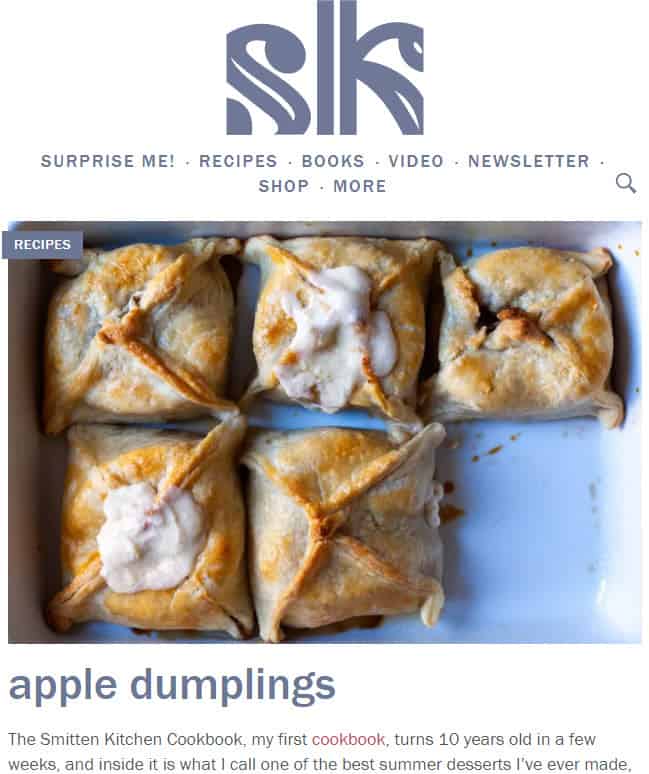
[auto-list-number] The Kitchn
A food blog with recipes, cooking tips, and kitchen design inspiration.
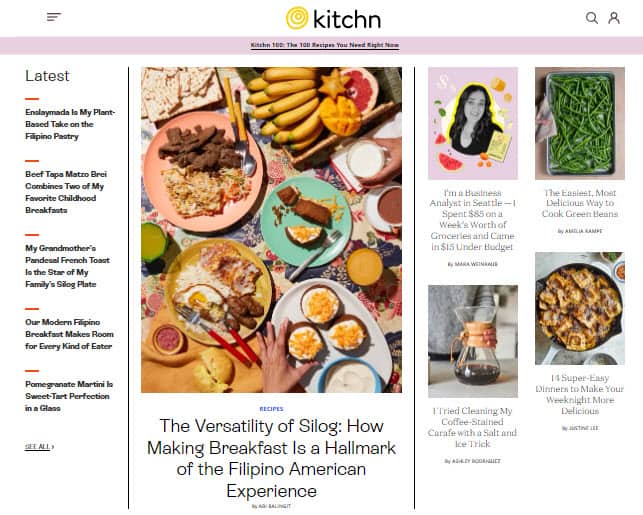
Validate Your Niche
Once you’ve identified a few possible niches, you should do some research to see if there’s a market for them.
Can it be monetized?
Check if your niche can be monetized. The best way to do this is to check how your competitors are making money. Are they selling products? Are they running ads? Are they doing affiliate marketing? Almost all food niches can be monetized with ads but if you can monetize with affiliate marketing, then your income potential will be much higher.
Is it non-seasonal and evergreen?
You don’t want your hard work to go to waste. So, check the popularity of your niche in Google Trends.
Google Trends is a free tool that shows you how popular a topic is. Simply enter your niche into the Google Trends search bar and you’ll see how popular it is.
Some food niches get seasonal traffic. An example is Skiing. You can see this in the Google Trends graph below.
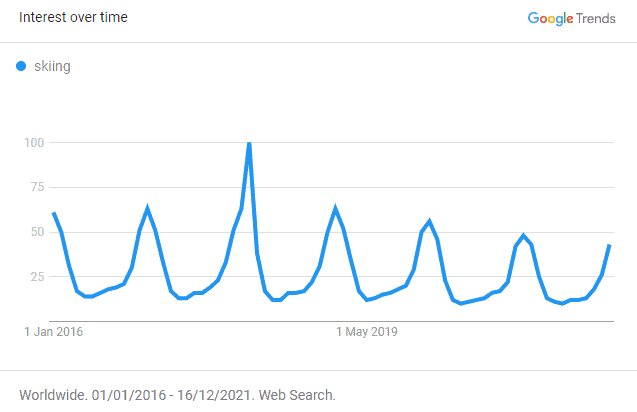
This means that if you start a Skiing blog, you’ll get the most traffic when it is snowing. When it comes to food, there are certain seasonal niches like Christmas baking. The traffic will drop off significantly after December. So, you need to decide if you’re okay with this or if you want to choose a niche that has more consistent traffic throughout the year.
Some food niches are getting less and less popular with time. Tech niches are especially prone to this. Look at the Googe Trends chart for iPhone 5.
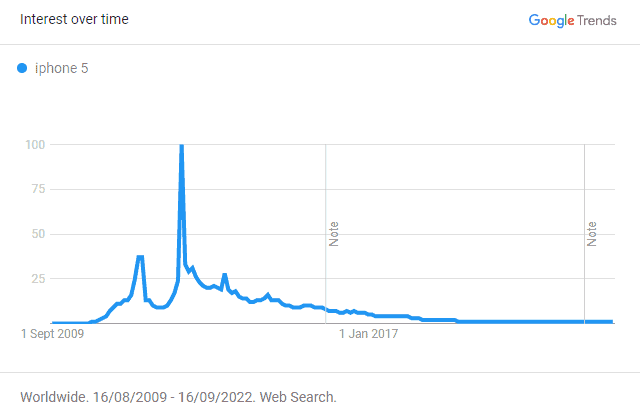
If you choose a non-evergreen niche, you’ll have to work hard to get traffic to your site. And the popularity of your niche may continue to decline over time. An example of this happening in the food niche is the Atkins diet.
Avoid niches that are seasonal and trending downward. Focus on evergreen niches which can be monetized easily.
3. Pick & Register a Blog Domain Name
Once you have chosen your niche, it is time to brainstorm a few names for your food blog.
When you choose a name for your food blog, choose a short and simple one that expresses the essence of your niche. We suggest combining two words to create your food blog’s name (Example: Minimalist Baker). One of the two terms should be a keyword from your niche. The second word can be anything that makes your website brandable.
Here are some of the words that you can mix and match into your food blog’s name:
- Food
- Baker
- Cook
- Chef
- Kitchen
- Nom
- Eating
- Cuisine
- Gourmet
- Recipes
- Cooking
- Spice
Use a Business Name Generator to brainstorm the name of your blog.
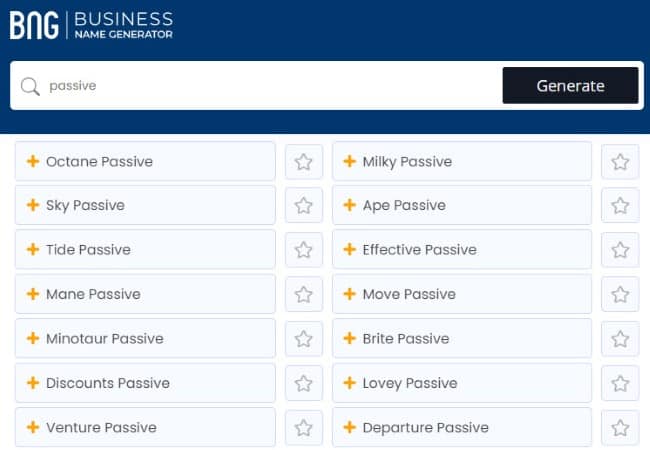
You can also use your own name for your blog. But if you ever plan to sell your website in the future, it is much more difficult to transfer your brand to the buyer when it is your name.
Check Domain Name Availability
After you have brainstormed a few names for your food blog, you should check if the .com domain name is available.
The domain name is going to be the address of your food blog on the internet. It’s the name that needs to be typed into a web browser to visit your food blog. For example, PassiveBook.com is the domain name for this website.
You must check if both the .com domain name and the social media handles are available. You can use Namechk to check the availability of both your domain name and social media handles.
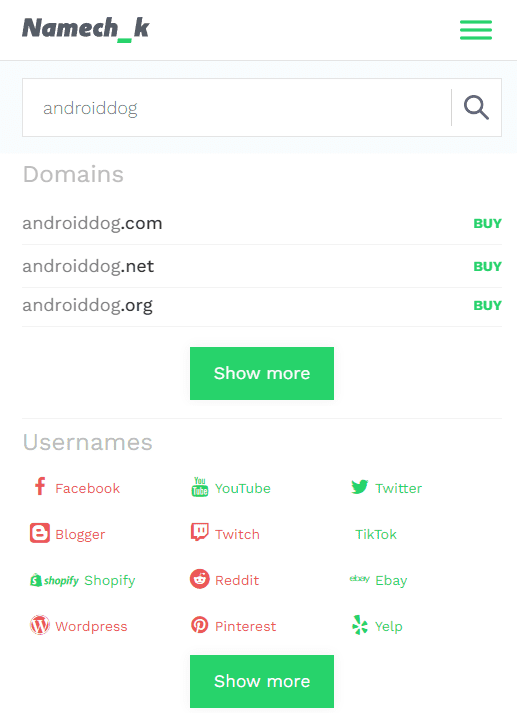
Here are a few things to keep in mind when selecting a domain name:
- Choose a .com domain name. 86% of the internet uses .com, so your visitors are likely to try visiting your blog by typing .com. Avoid other extensions like .net or .org.
- Don’t include hyphens and numbers.
- Do not use words with multiple spellings (for example colour vs color).
- Shorter domain names are better. Try to keep it under 12 characters.
- Spelling & Pronunciation should be easy and intuitive.
- Have brandable domain names (like chewy.com) instead of keyword-stuffed domain names (like bestdogfood.com).
- Avoid words that can be misread together. For example, therapistjohn.com can be read as Therapist John or The Rapist John.
- Make sure it’s not trademarked or copyrighted by someone else. The AI writing software Jarvis.ai had to rebrand to Jasper.ai because Marvel sued them for the Iron Man reference. Lawsuits will happen once your blog is established.
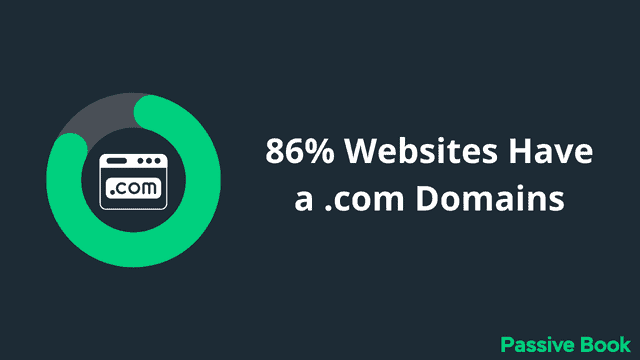
Register a Domain Name
Once you decide your domain name it is time to register it.
You should register your domain with NameCheap because you will get domain privacy for free. Other providers charge $12 per year for domain privacy. Without domain privacy, your name, home & email address will be accessible to the public.
Step 1: Go to NameCheap. Enter your domain name with the .com extension.
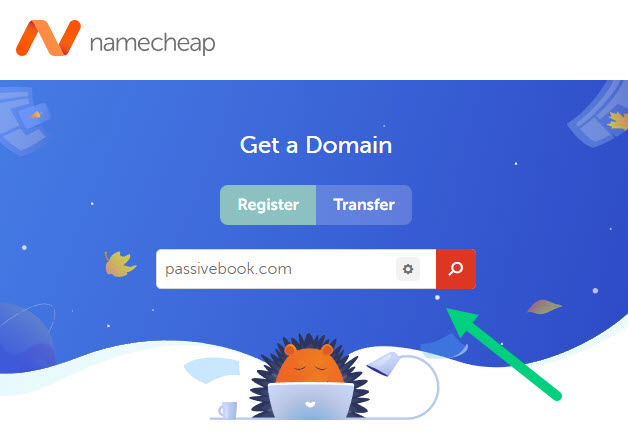
Step 2: Select the .com extension and click the Add to Cart button.
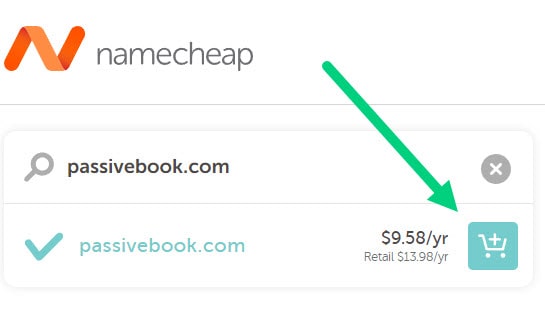
Step 3: After adding the domain to the cart, click on the Checkout button.
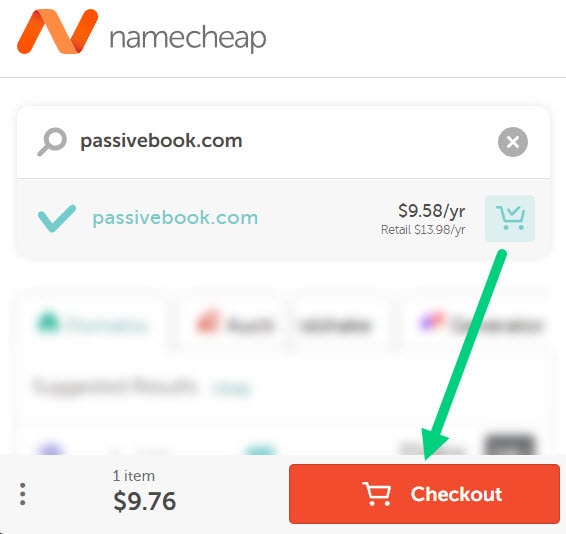
Step 4: Enable Domain Privacy that comes for free along with auto-renew. You don’t need any other paid addon.
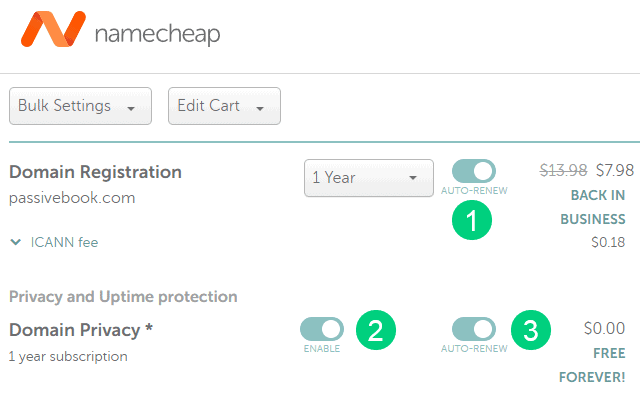
Step 5: Click on Confirm Order. Pay to complete your purchase.

Step 6: Log in to Namecheap and click on Domain List ❶ in the left sidebar and then click Manage ❷ next to the domain you just purchased.
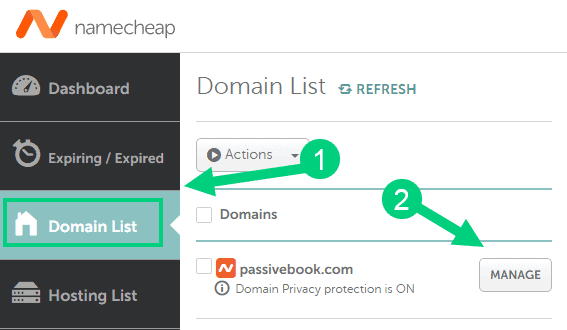
Step 7: Under the Nameservers section, select “Custom DNS” from the dropdown ❶. Then enter the following two nameservers ❷ ns1.bluehost.com and ns2.bluehost.com as shown in the image. Then click the green tick ❸ to save. If you use a hosting provider other than Bluehost, enter their nameserver values in this step instead.
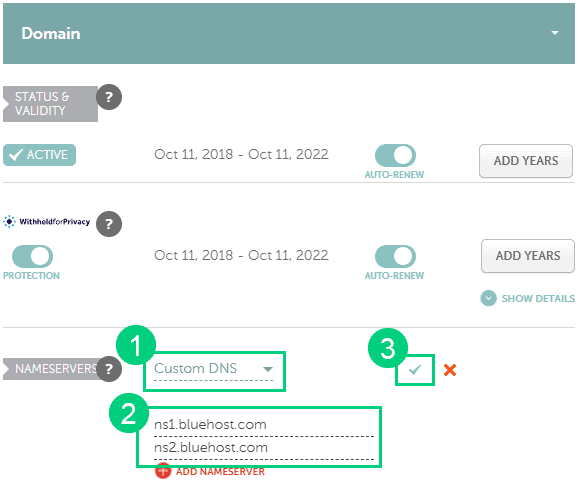
Can I get a free domain name?
Your web hosting provider might give you a free domain name for one year but they charge $12 for domain privacy which is free in Namecheap. From the second year, you will pay for both the domain and privacy which will cost you more than $20+. So it is cheaper to just register your domain with Namecheap from the beginning. Also using different companies for web hosting and domain registration will allow you to easily switch your blog host later without transferring domains.
Can I change the name of my blog later?
You will lose your search engine rankings if you change your blog’s name once it gets links from other websites. It will take as long as a year or more for you to regain the lost traffic. It is possible to mitigate problems by having proper redirects. But you will have to renew both your old and new domains every year. So try to avoid changing your blog’s name once it is established.
4. Setup WordPress
The next step is to get your blog up and running in WordPress. WordPress makes it easy to create a professional-looking blog without having to learn to code.
Why Choose WordPress.org?
While there are many different blogging platforms available, we recommend WordPress.org for food blogs. Self-hosted wordpress.org powers 70% of blogs on the internet. 42% of all websites on the internet use WordPress. And it is used by some of the most popular food blogs including Pinch of Yum and Gimme Some Oven.

Here are some of the reasons why you should use WordPress.org:
- It is open source, which means that developers can create themes and plugins for it. This results in a huge library of WordPress themes and plugins that you can use to build your blog.
- It is very user-friendly and easy to use, even for complete beginners.
- It is extremely versatile and can be used for any type of blog or website.
- It is well-supported with regular updates to the WordPress software, themes, and plugins.
- It has a large community of users who can help you if you run into any problems.
WordPress.org vs WordPress.com
There are two versions of WordPress – WordPress.org and WordPress.com.
WordPress.com is a blogging platform where you can create a blog for free. But there are some limitations. For example, you cannot install plugins or themes.
We recommend using WordPress.org because it gives you complete control over your blog. It is also free to use, you just need to pay for your hosting & domain name.
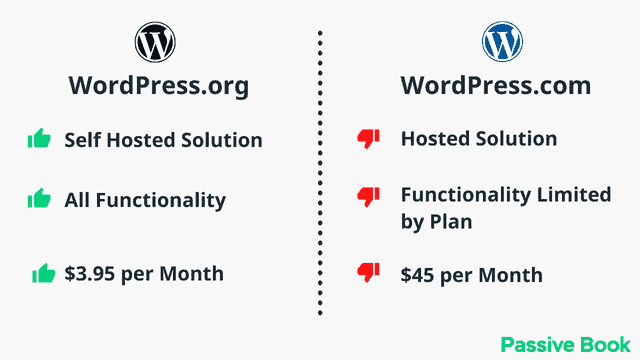
If you are serious about blogging and want to make money from your blog, then we recommend using WordPress.org.
Why Avoid Free Blogging Platforms
There are many free blogging platforms available including Blogger, Tumblr, and WordPress.com. While these platforms may be tempting because they are free to use, we do not recommend using them for food blogs.
The main reason for this is that you do not own your blog on these platforms. This means that the platform can delete your blog at any time without warning. For example, Blogger blogs get banned for no reason every day and the owner of the blog will only see the following screen without any way to retrieve the posts that they have published.

Another reason to avoid free blogging platforms is that they are not as versatile as self-hosted WordPress.org. This means that you will be limited in terms of the design and functionality of your blog.
If you are serious about starting a food blog, we recommend using WordPress.org from the start.
How much does it cost to start a successful food blog?
It will cost you $2.95 per month to host your WordPress food blog in Bluehost. A domain will cost you $12/year. So that is a total of $4.2 per month, which is less than the price of Netflix for all the unlimited features that a self-hosted WordPress blog has to offer.
What to do if you already have a free blog?
If you already have a food blog on a free platform like Blogger, you may migrate it to a self-hosted WordPress blog by using one of the import plugins. Install WordPress and install an import plugin to move all of your articles to WordPress with just one click.
Install WordPress in Hosting
You need to purchase hosting before you can install WordPress. Hosting is a service that stores your website files on a server so that they are accessible to the world 24/7. Once you purchase hosting, we will install WordPress in it.
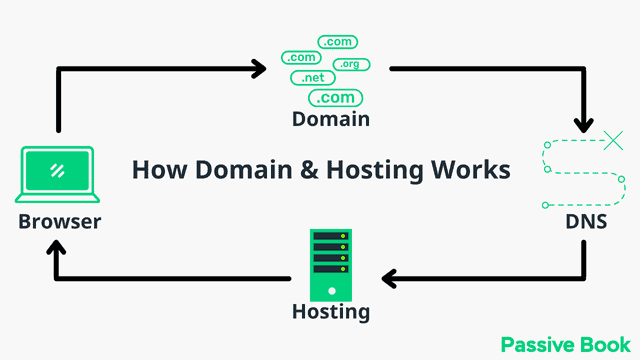
For this guide, we will use BlueHost as our web host. It is a cheap hosting that is extremely easy for beginners to set up. If you use any other web host, the steps will be the same but the user interface may be slightly different.
1. Go to BlueHost using this link to get a special discount. Select WordPress > WordPress Hosting from the top menu.
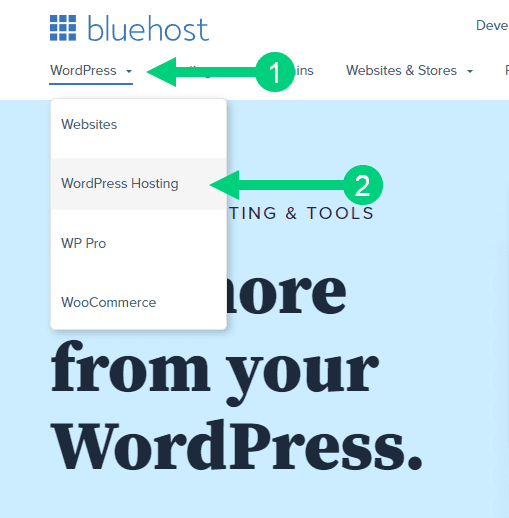
2. Click on the button you see on this page and you will be taken to the pricing section.
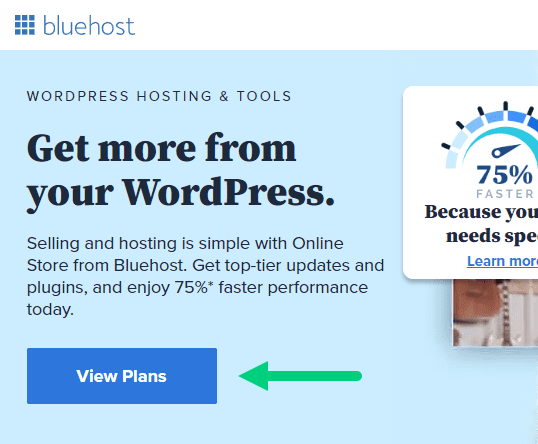
3. Select the Basic Plan. You can upgrade to a different hosting plan as you grow.

4. If you already have a domain name that you purchased with Namecheap you can put that in the “Use a domain you own” ❶ section. If you don’t have a domain name yet, choose the “Create a New Domain” ❷ to purchase a new domain.
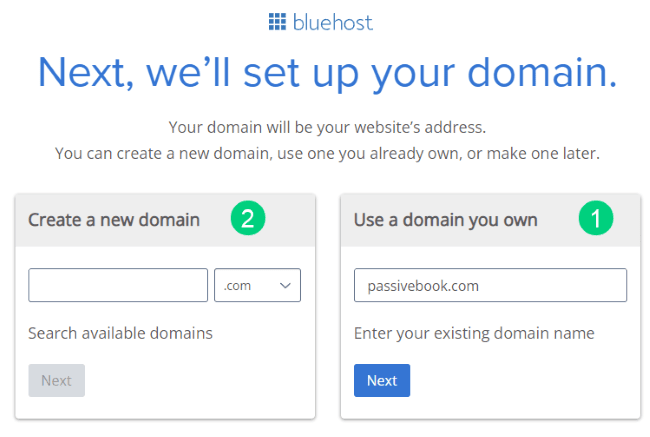
5. In the next screen, enter your information. Uncheck all package extras. If you purchase your domain through Bluehost instead of Namecheap, you may want to enable Domain Privacy. You won’t see the Domain Privacy option if you bought your domain through Namecheap. Namecheap will give you this Domain Privacy for free.
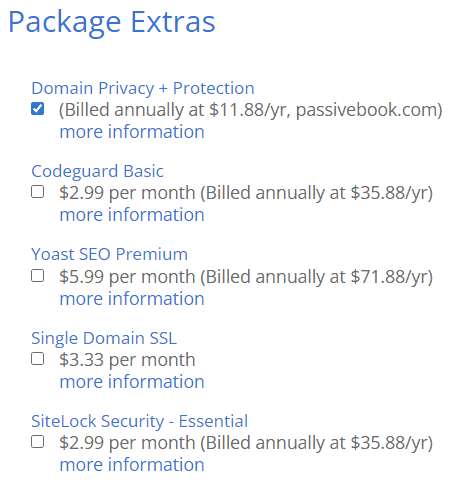
6. Once you have successfully paid, you will be prompted to set a password. Click on the “Create your Password” button.
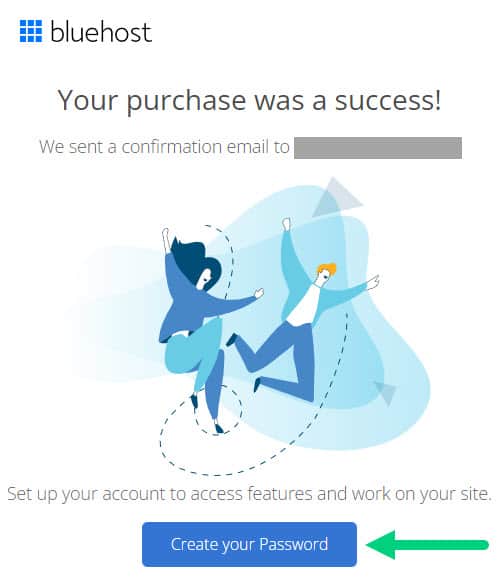
7. Enter your password and create your account. If you lose this password, you can reset it.
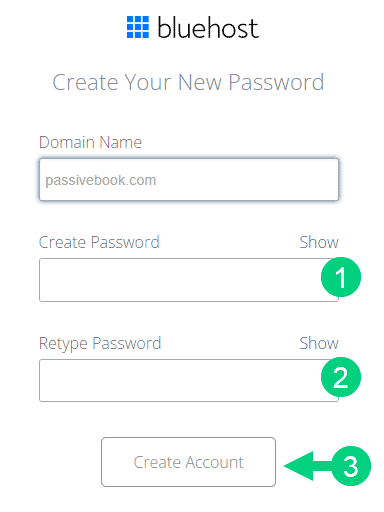
8. After you set your password, log in to Bluehost.
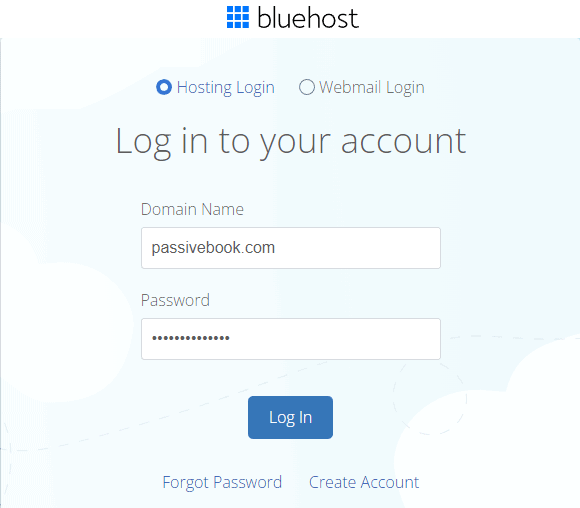
9. Click on the Create your website button on the following screen. This will start a Bluehost Wizard, just click Skip this step wherever possible.

10. On the following page, click “No help needed” or “Skip this step”. We don’t want Bluehost to limit our customization options.
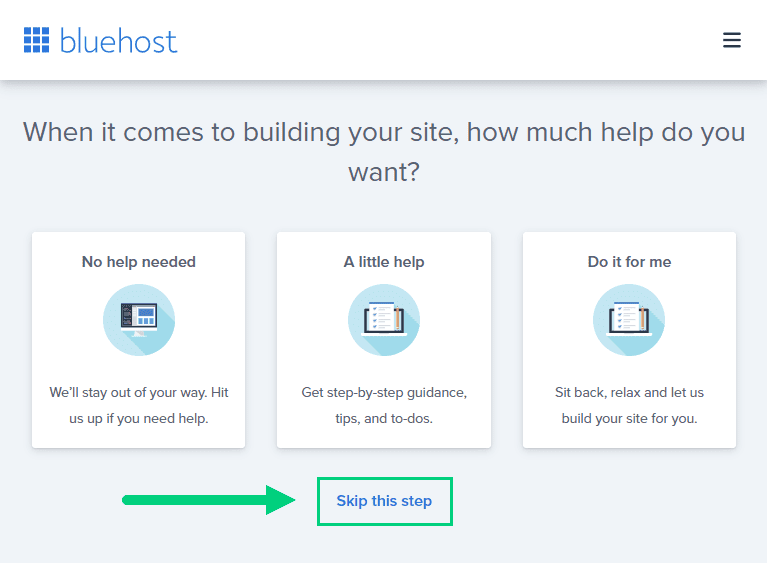
11. On the next page, you will be asked about the purpose of your website. You can choose from any of the available options.
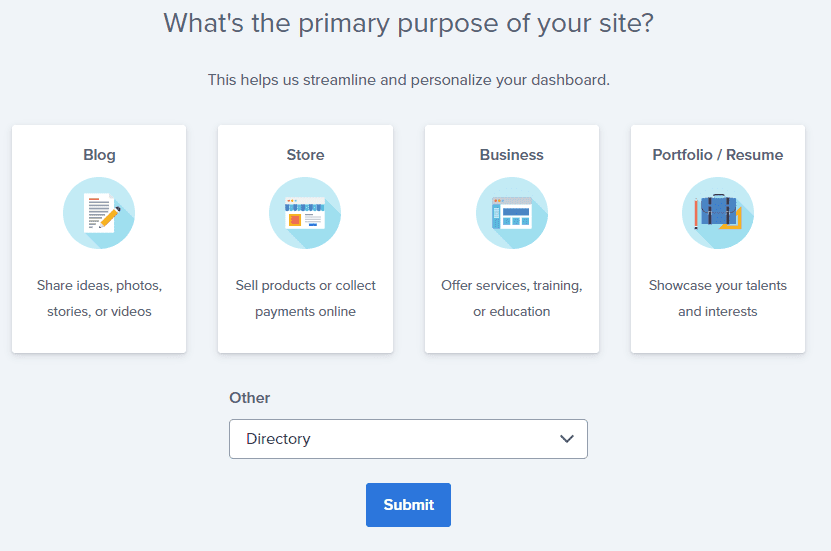
12. On the next page, click Skip this step.
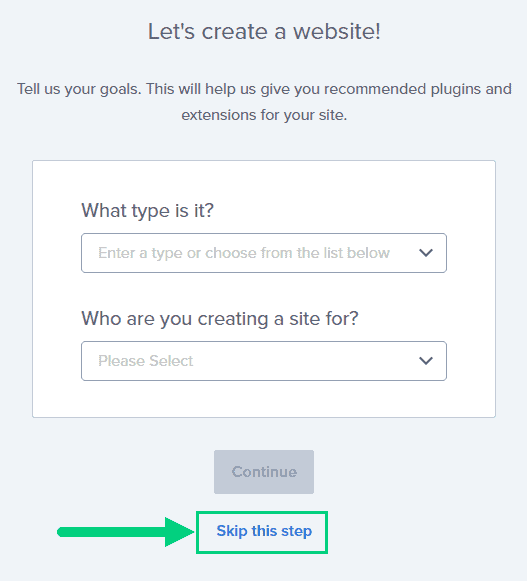
13. On the following page, enter the blog’s name and tagline. You can change this later so feel free to click “Skip this step” or enter something as a placeholder and click Continue.
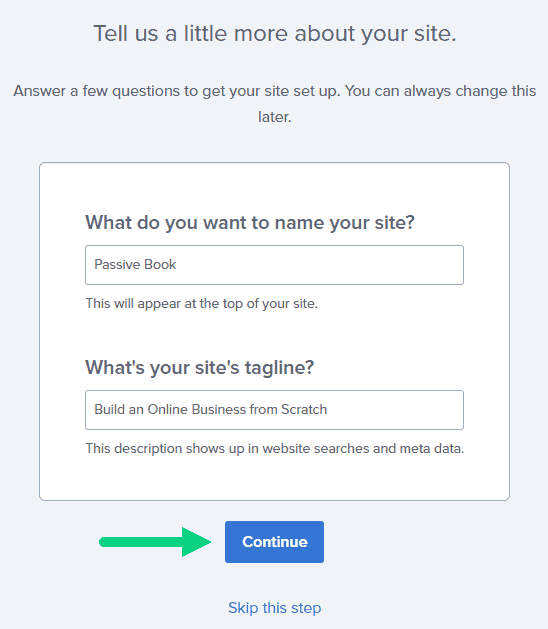
14. Finally you will be asked how you want to build your website. Choose “Limitless customization” to have all the options.

15. You can see your blog by going to yourdomain.com. Go to the Bluehost dashboard and click on the My Sites tab ❶ in the left sidebar and click on the “Manage site” button ❷.
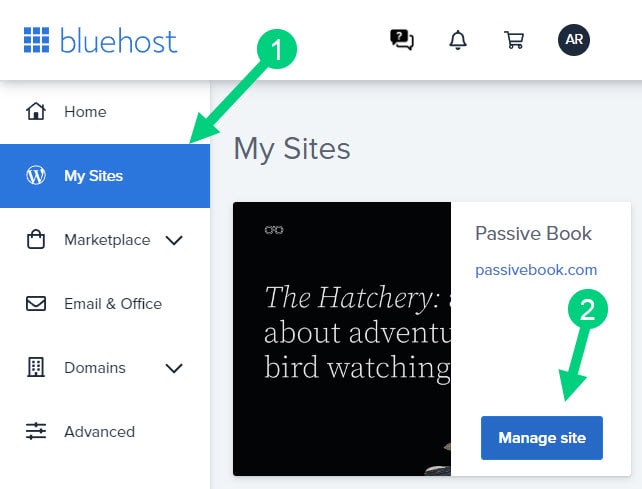
16. Your WordPress site has separate login credentials different from the ones you use to log into Bluehost. You can use this to log in to the WordPress dashboard directly without logging into Bluehost. To get this:
❶ Click on Users on top.
❷ You will be able to see your username and email that you can use to log in to WordPress.
❸ If you click on the three dots you will see the option to Reset your password. ❹
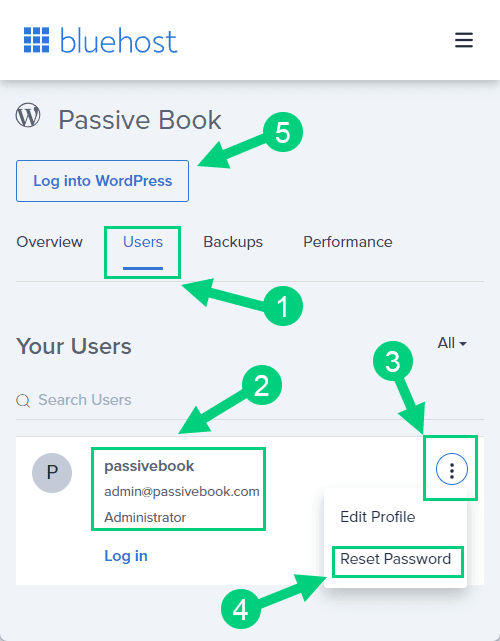
You can log into WordPress from the Bluehost dashboard by clicking the Log in to WordPress button ❺. But it is not recommended you rely on this as your primary login method because you will get locked out of your site if you ever change hosting providers.
17. You will be taken to the WordPress dashboard where you can reset your password ❶. If you don’t like the username Bluehost created for you, you can Add a New User ❷.

18. If you are adding a new user make sure you specify the user role as Administrator ❶. You can log in as the new user and safely delete the default user created by Bluehost.
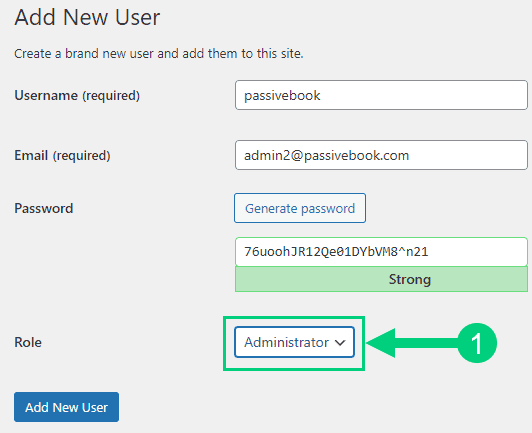
Congratulations! You have successfully set up WordPress.
Configure WordPress
Once you have installed WordPress, the next step is to configure it. This includes choosing a WordPress theme, installing plugins, and setting up your navigation menu.
Login to WordPress Dashboard
Visit yourdomain.com/wp-admin to access the WordPress dashboard.
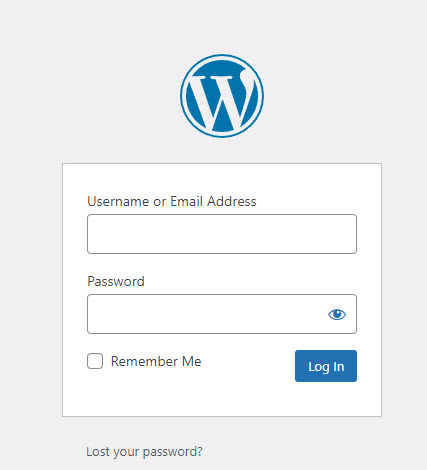
The WordPress Dashboard is the control center for your WordPress blog. It includes all of the tools and options you need to manage your blog.
Use the Email and Password you provided during installation to log in to your WordPress dashboard. If you don’t have a password, use the “Lost your password?” to generate a new password.
Install WP Themes
A WordPress Theme determines the look and feel of your WordPress blog. Your new WordPress blog will be installed with a default blog theme that doesn’t look very great.
To install a new WordPress Theme:
Go to Appearance > Themes > Add New in your WordPress dashboard.
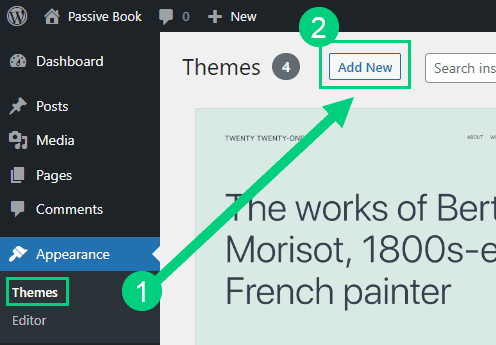
Use the search to find a theme that you like ❶. Before you install the theme, you can see a demo of the theme and learn about its features from the preview screen ❷. If you like the theme, you can install it by clicking the install button ❸. You can also upload a theme from a file on your computer ❹.
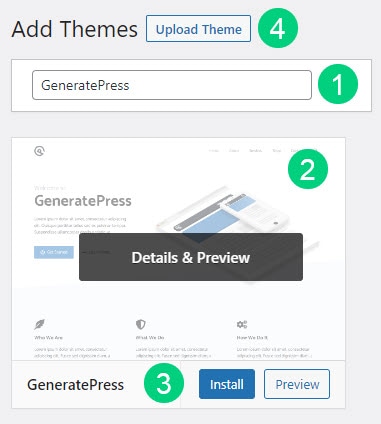
Once installed, click the Activate button to enable the theme.
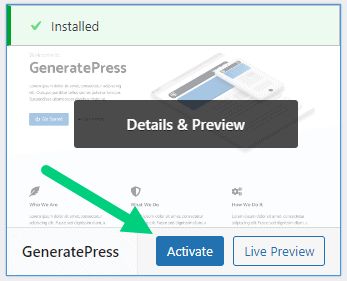
Although you can use a free theme (there are thousands of free themes available), we recommend using a premium theme.
Premium themes not only reduce your website’s load time but also help you customize your website to your heart’s desire.
Here are the premium themes we recommend:
There are also several themes custom-made for food blogs. These themes tend to be bloated with poor code which will slow down the performance of your website. We recommend getting one of our recommended themes for a fast website with unlimited customization possibilities.
Install WP Plugins
A WordPress Plugin adds features and functions to your food blog.
There are many different types of WordPress plugins, and you can find plugins for just about anything.
Too many wordpress plugins can slow down your blog site. So before you install new plugins, it will be worth clearing out any existing plugins that your hosting provider installed by default.
Plugins first need to be deactivated before they can be deleted.
❶ Go to WP Admin > Plugins > Installed Plugins
❷ Click on the checkbox to select all plugins.
❸ Select Deactivate from the drop-down.
❹ Click Apply.
❺ Repeat the above steps but select “Delete” instead of “Deactivate” from the dropdown in ❸ to delete all the deactivated plugins.
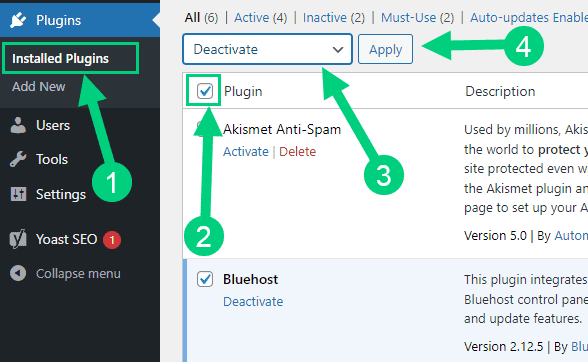
To install new plugins go to the WP Admin > Plugins > Add New.
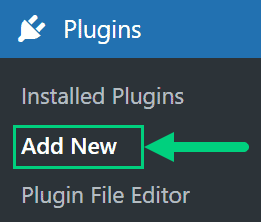
On the plugins page:
❶ Search for the plugin you want in the search bar
❷ Click Install Now. Once you install the plugin, you must also activate the plugin for it to be enabled.
❸ If you are installing a paid plugin you can upload the plugin instead.
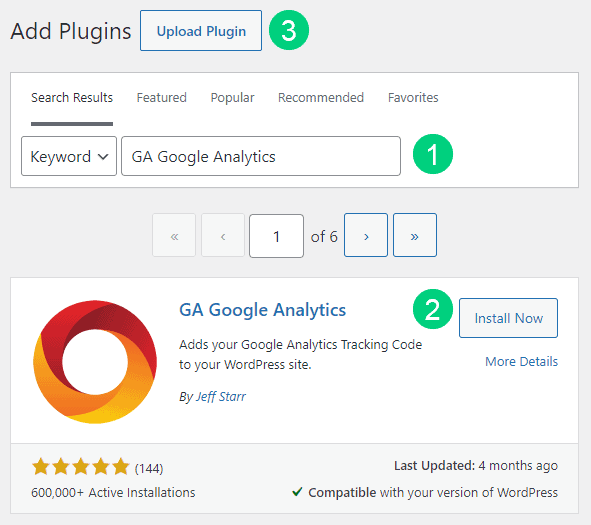
There are many different plugins that you can install, but here are the ones which we recommend:
Recipe Plugin
A recipe plugin allows you to add recipes to your WordPress blog. It allows you to add recipes by inputting the recipe ingredients, directions, and nutrition info. You can also create recipe templates to make adding recipes faster.
Recommended Plugin: WP Recipe Maker (free) or WP Tasty Recipes (paid).
Backup Plugin
A backup plugin is a plugin that creates backups of your food blog. This allows you to restore your food blog if something goes wrong.
Recommended Plugin: WPVivid (paid) or UpdraftPlus (free).
SEO Plugin
A SEO plugin is a plugin that helps you improve the Search Engine Optimization of your food blog which can help you get more traffic to your food blog from search engines like Google and Bing.
Recommended Plugin: RankMath (paid).
Google Analytics Plugin
An analytics plugin is a plugin that allows you to track the traffic on your food blog. This includes the number of visitors, the pages they visit, their location, and how they found your blog.
Recommended Plugin: RankMath (paid) or GA Google Analytics (free).
Cache Plugin
A cache plugin is a plugin that stores static copies of your food blog pages and posts. This helps your food blog load faster because the server doesn’t have to generate the page each time someone visits it.
Recommended Plugin: WP Rocket (paid).
Page Builder Plugin
A page builder plugin allows you to create custom pages on your food blog without having to code. This can be helpful if you want to create a landing page or a home page.
Recommended Plugin: Thrive Architect (paid).
Security Plugin
Security plugins help to secure your food blog from hackers.
Recommended Plugin: Wordfence (free).
Social Media Plugin
Social share plugins add social media buttons to your food blog so that readers can share your content on their social media accounts.
Recommended Plugin: Easy Social Share Buttons (paid).
Customize WordPress
Once you have installed your theme and plugins, it is time to customize the wordpress blog platform:
Change Colors, Fonts & Spacing
You can set the font, colors, and spacing by going to Appearance > Customize in your WordPress dashboard. Premium themes like GeneratePress allow you to customize every aspect of your blog.

Check out our Blog Fonts & Typography guide to choose the right font and typography settings for your blog.
Add Your Logo
Get a logo designed for your blog from Fiverr. Then set the logo of your blog by going to Appearance > Customize in your WordPress dashboard. A logo is not required for a successful blog but it can definitely help appeal to your target audience.
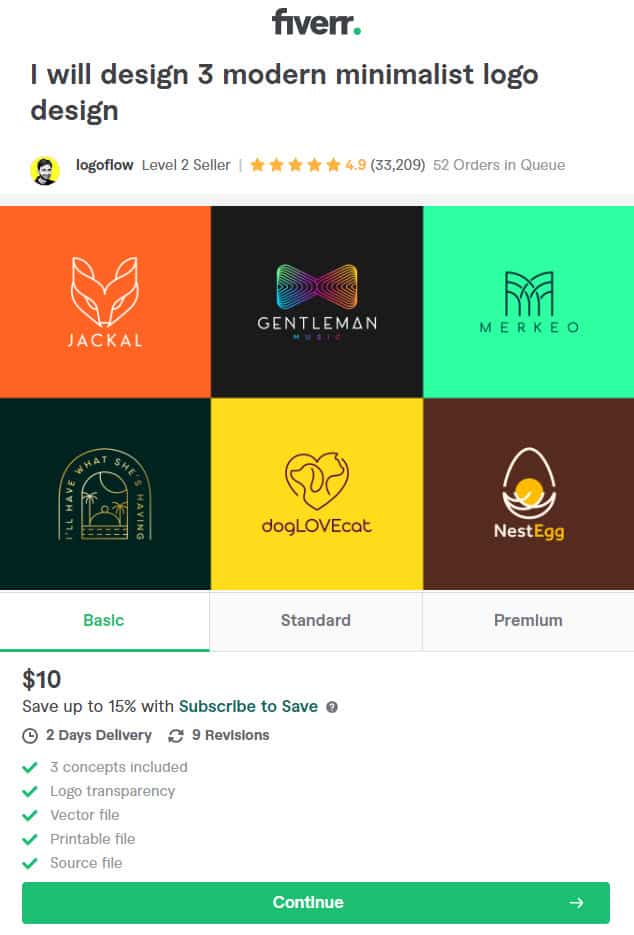
Change Favicon
Favicon is the image that appears in the browser tab and bookmarks. Set the Favicon from the Appearance > Customize section of the WordPress dashboard.

Create Menus
The header and the footer menu can be set from the Appearance > Menus in your WordPress blog dashboard.
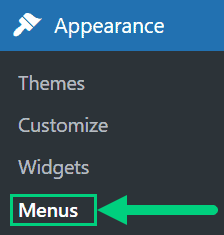
You can nest menu items so that it appears as a dropdown menu ❶. You can use the menu as your primary or secondary navigation menu ❷. Don’t forget to save your menu ❸.
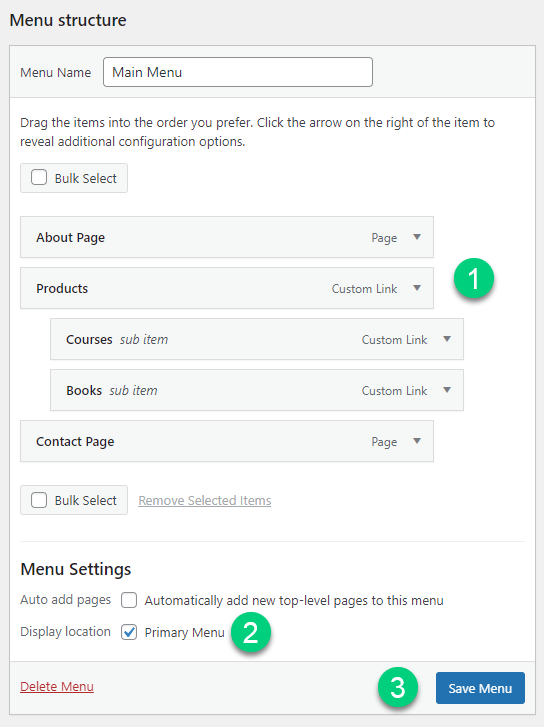
Create Widgets
If you have a sidebar, you can add widgets to it. Go to Appearance > Widgets in your WordPress admin dashboard.
Check out the list of the most useful Blog Widgets and how to add them to your blog.

Set Title & Tag Line
The next step is to change your General Settings. Go to Settings > General in the WordPress Admin area.
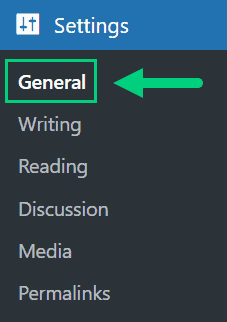
You can set your Site Title, Tagline, and Time Zone from this screen.
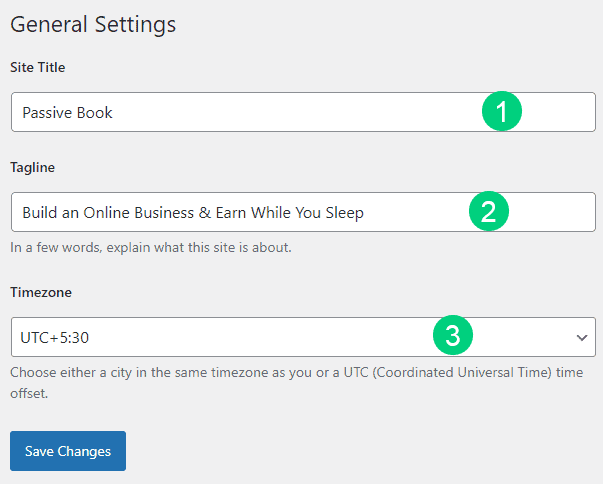
Set Permalinks
The ideal URL structure for SEO is yourdomain.com/sample-post. Set your permalink structure by going to Settings > Permalinks in your WordPress blog dashboard.

Select the “Post name” radio button and save changes.
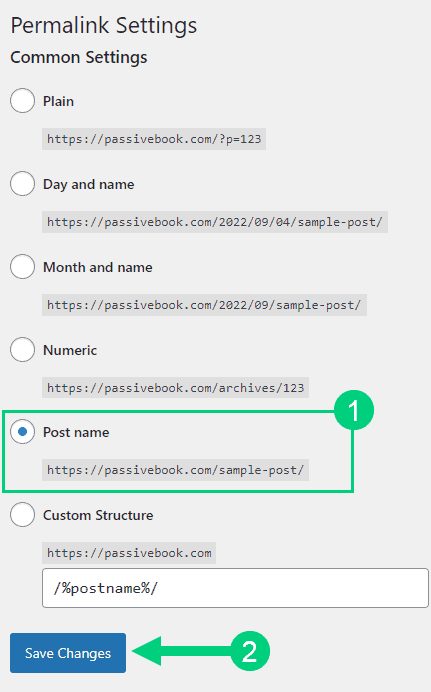
Enable Search Visibility
Chances are you want your blog to show up on Google so people can find you. Go to Settings > Reading in your WordPress dashboard.
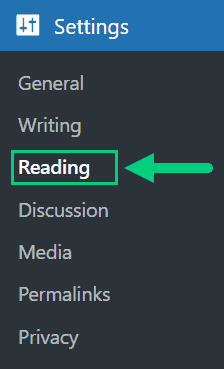
To get search engine traffic, ensure the checkbox “Disable search engines from indexing this site” is Unchecked. You can find this option in Settings > Reading. Most of the time this should be unchecked by default but if it is not, then uncheck it to ensure your site gets traffic from search engines.
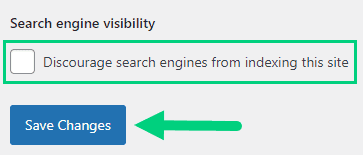
Adjust Comment Settings
Next, you will want to change the Discussion Setting (aka Comments). Go to Settings > Discussion in your WordPress admin area.
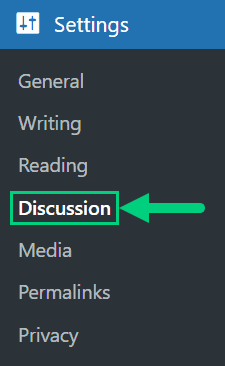
❶ You may want to enable or disable comments on this page. You can also disable pingbacks and enable comment moderation.
❷ You can also set comment approval settings.
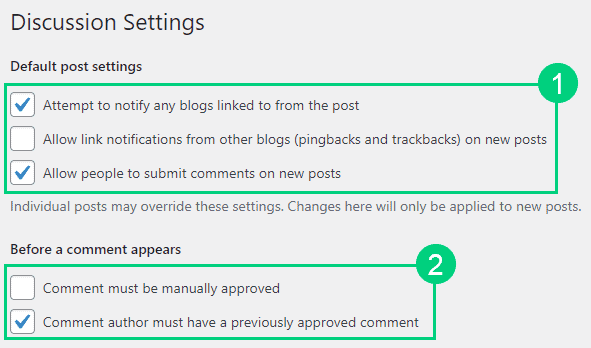
If you want to design your blog further, check out our dedicated guide on blog design which has all our best blog design recommendations.
Create Static Pages
There are a few essential pages that you need to create for your food blog before you can start blogging.
Use pages in WordPress to add static content. Go to WP Dashboard > Pages > Add New.
- Write the headline of your content.
- Populate the body content
- Click the publish button.
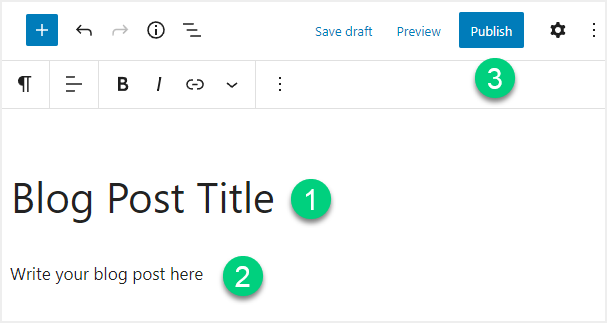
You may want to create the following pages:
Home Page
A blog homepage is the main page of your website. It usually contains a summary of your latest blog posts, with a featured post at the top. You can also add an about me section and a lead capture form. If you have any paid products, you can list them on the home page. You can create a professional home page for your food blog using a page builder like Thrive Architect.
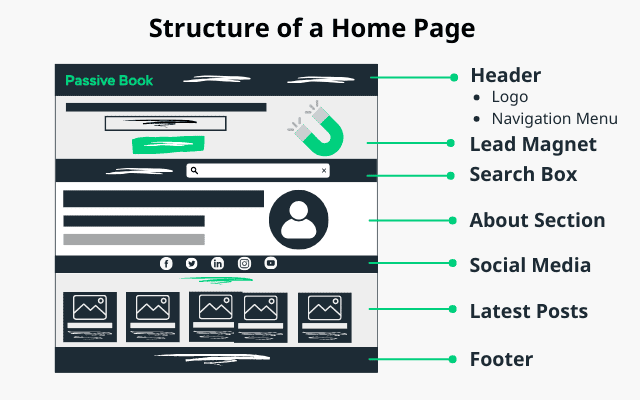
About Page
An about page is a page where you tell your visitors who you are and what you do. It builds trust and credibility with your visitors. You can also add an opt-in form to capture leads.
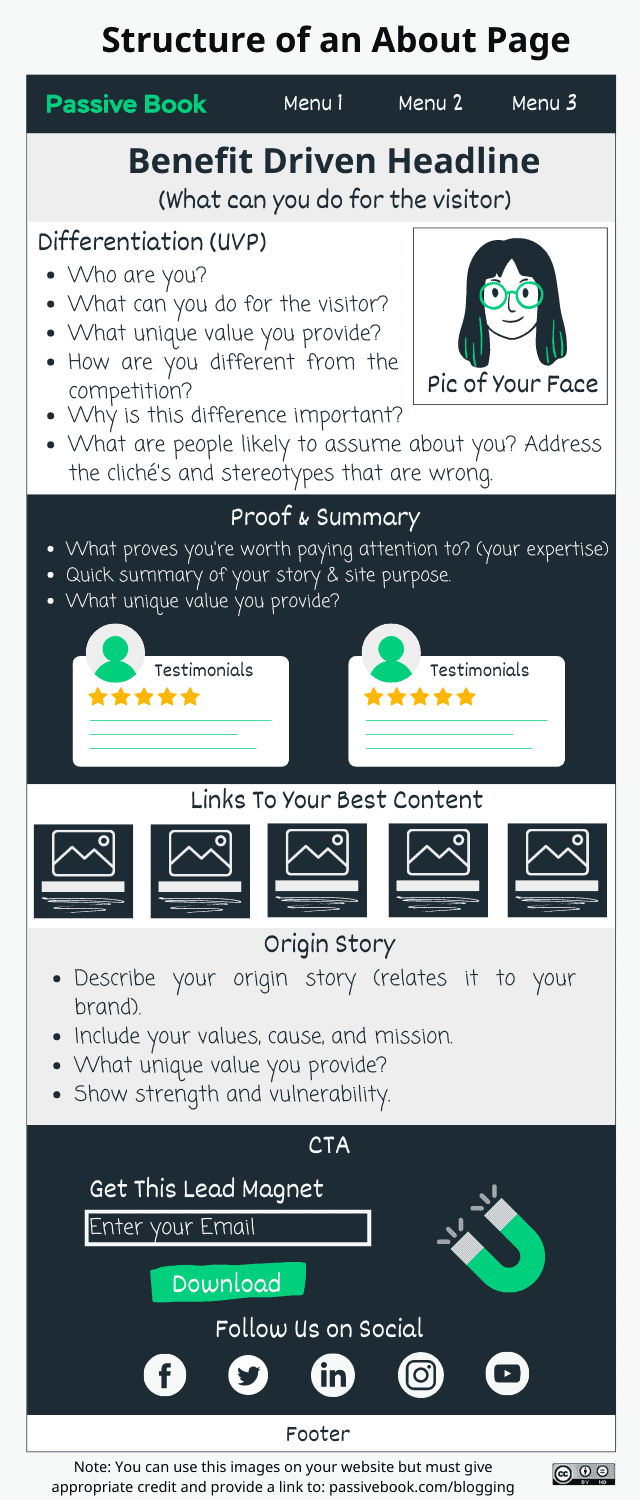
Contact Page
A contact page is where you list your contact information so that visitors can get in touch with you. You can also add a contact form instead of providing an email address. Use contact form plugins like Fluent Forms.
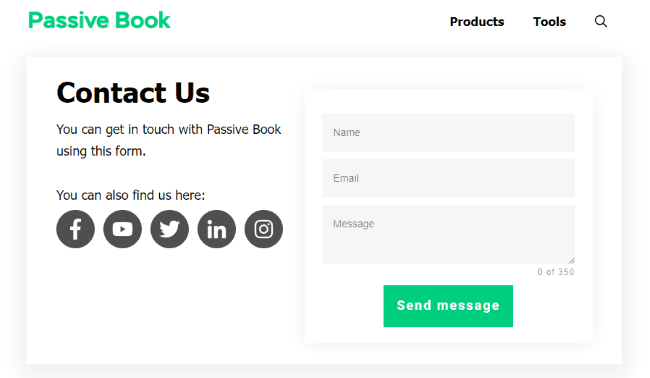
Privacy Policy
A privacy policy page is a must-have page if you are collecting any personal information from your visitors (like email addresses). WordPress generates its own privacy policy for you. But you can also use a tool like Termly to generate your own privacy policy.
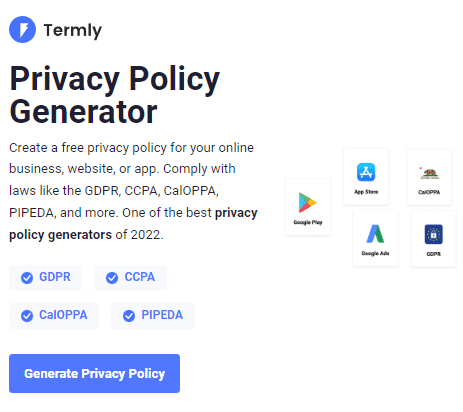
Terms of Service
A terms of service page is another must-have page if you are selling anything. It protects you from any legal liability. Use a terms & conditions generator like Termly to create it.
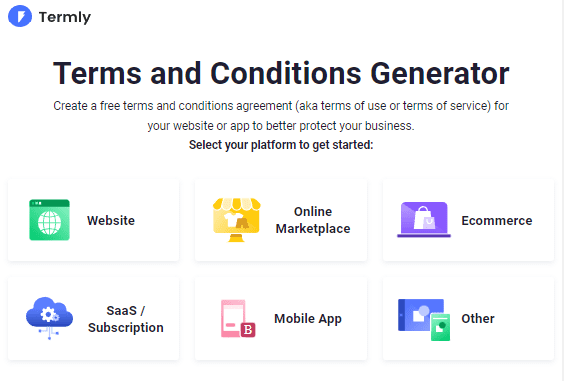
5. Write & Publish Blog Posts
Now that you have your food blog set up, it’s time to write and publish your first blog post.
1. Brainstorm Topics
You should brainstorm 100 topic ideas for your food blog. This will ensure that you never run out of ideas to write about.
The goal is to find topics that your audience is searching for in Google. The type of content you write on your food blog will depend on your specific niche. In general, you can cover the following topics on your food blog:
- Recipes
- Restaurant Reviews
- Cooking Tips
- Food Product Reviews
- Health & Nutrition
- Weight Loss
- Grocery Store Reviews
There are a few ways to brainstorm content for your specific niche:
Look at Competitors
You can look at other food blogs in your niche to get ideas for content. To find your competitors, simply google keywords related to your niche and look at the websites that rank on top.
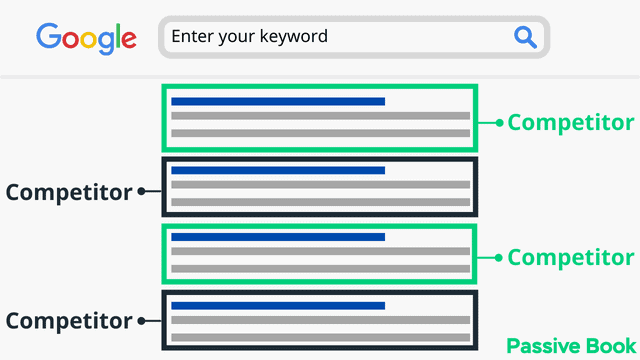
Try to find blog posts of your competitors that are doing well in Google and see if you can write a similar article but with a different angle.
Keyword Research
Keyword research is the process of finding keywords that people are searching for in Google. You can then use it to write articles.
There are a few tools you can use for keyword research:
Keyword Tool: This is a free tool that allows you to find keywords from various search engines, including Google, Bing, Amazon, and YouTube.

Ahrefs: This is a paid tool that gives you access to a lot of data, including keyword ideas, traffic statistics, and competitor analysis for SEO.
SEMrush: This is a paid tool that allows you to find keywords from Google.
You can put your seed keyword in any of these tools and it will give you a list of related keywords that you can write about.
Community & Forums
Another way to come up with topic ideas is to participate in forums and online communities related to your niche.
You can find relevant forums by doing a Google search. For example, if you are in the cooking niche, you can search for “cooking forums”.
Some popular forums are:
2. Create an Editorial Calendar
Once you have a list of topic ideas, it’s time to create an editorial calendar. This will help you plan and effectively organize your content.
An editorial calendar is a tool that allows you to plan and publish your content in an organized manner. It helps you keep track of your content ideas, deadlines, and publication dates.
Download Content Calendar Template

Steal our exclusive content calendar template. Have it delivered directly to your inbox:
You can also record information like the blog post title, keyword, word count, and author.
There are a few editorial calendar tools that you can use:
3. Write a Blog Post
Once you have planned and organized your content calendar, it’s time to start writing. We have an in-depth guide on How to Write A Blog Post. Here we will go over specific tips for a food blog.
Recipes
A Recipe post is a post that gives readers the information they need to prepare a certain dish at home, including ingredients, instructions, and tips. These posts include step-by-step instructions for creating a variety of dishes, along with photographs of the finished product.
Some recipe titles could be “Healthy Mediterranean Baked Fish” or “Vegan Chocolate Chip Cookies”.
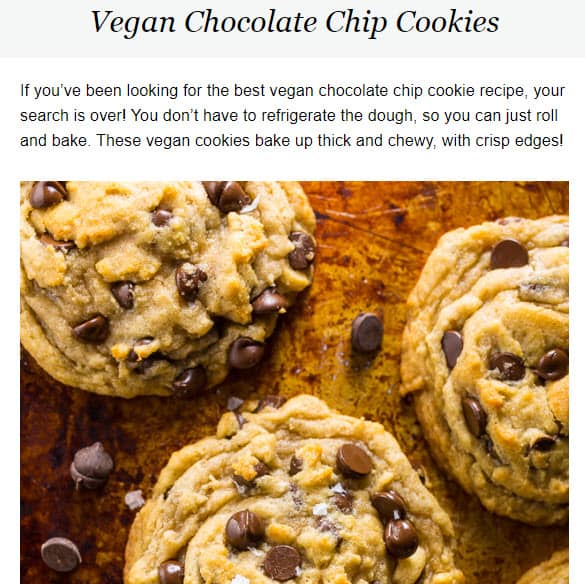
Make sure that the recipes are clear and easy to follow, with accurate measurements and information about cooking times and temperatures. Also, consider including variations of the recipe, for dietary restriction or personal preference. You can also add some background information about the dish.
If you are writing a recipe then use a recipe plugin to include:
- The ingredients needed
- The step-by-step instructions
- The cooking time
- The serving size
- Tips and variations
Food Reviews
A restaurant review post is a post that evaluates and provides an opinion on a particular restaurant, its food, atmosphere, service, and value. You can write reviews on local restaurants, bars, or cafes.
The post could be named “A Critic’s Take on the New Italian Restaurant in Town” or “Vegan Eats: A Review of Boteco – The Latest Plant-based Restaurant”.

Be honest, and objective, providing both positive and negative feedback.
Also, consider including photographs of the food and the restaurant, and providing some tips on what to order, when to go, and how to make a reservation. If you are writing a restaurant review then use Google Maps to find information about the restaurant.
When doing a review, make sure to include:
- Your thoughts on the food
- The price
- The service
- The ambiance
- The location
Ingredient Spotlight
An ingredient spotlight post is a post that focuses on a particular ingredient, providing information on its history, culinary uses, nutritional value, and tips for selecting and storing it.
Some Ingredient spotlight titles can be “All About Garlic: A Staple in Every Kitchen” or “The Nutritional Power of Dark Leafy Greens”.
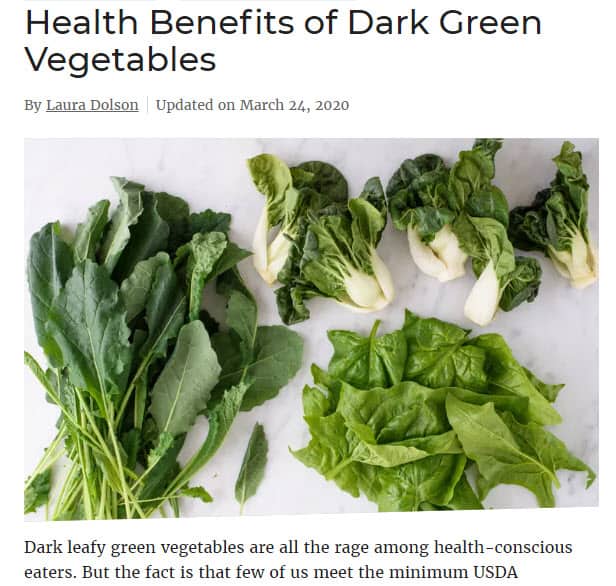
Research the ingredient and provide accurate information. Also, include pictures of the ingredient and creative ways to incorporate them into a recipe.
Personal Stories
A personal story post is a post that shares personal anecdotes or memories related to food, such as a beloved family recipe or a memorable meal.
Some examples of personal stories titles could be “Grandma’s Secret to the Perfect Pie Crust” or “Eating Street Food in Thailand: A Memoir”.

These posts allow readers to connect with you on a personal level and can evoke feelings of nostalgia or inspiration. When writing a personal story post, it’s important to be authentic and honest and to include sensory details and emotions to make the story come alive for the reader. Also, consider including photos or other memorabilia to enhance the story.
How-to Posts
A how-to post is a post that teaches readers how to prepare a particular dish or culinary technique, including ingredients, instructions, and tips.
Examples of how-to post titles could be “How to make Homemade Pizza from Scratch” or “DIY Fermentation: Making Your Own Sauerkraut”.
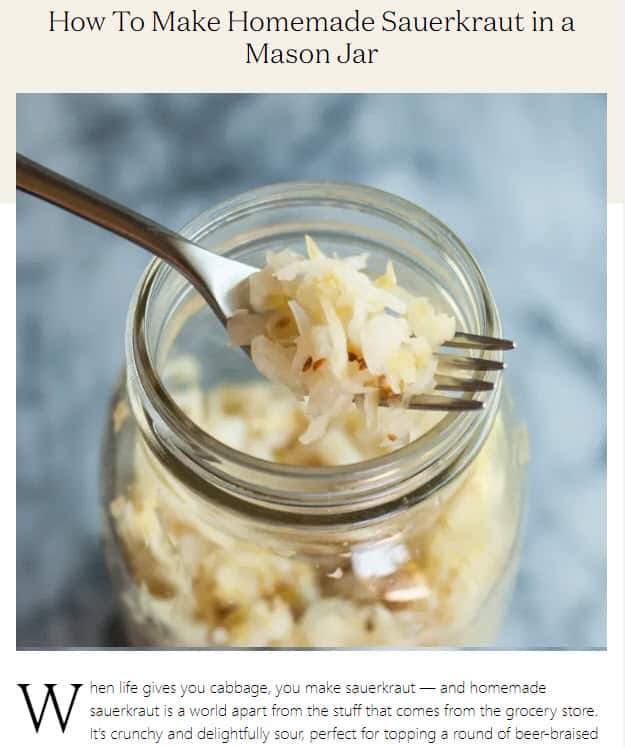
Make sure that the instructions are clear and easy to follow, with accurate measurements and information about cooking times and temperatures. Also, consider including pictures or videos to help illustrate the instructions.
Cooking Tips
Cooking tips posts provide helpful tips and tricks for improving cooking skills, from mastering knife skills to saving time in the kitchen.
Examples of cooking tip post titles could be “10 Essential Kitchen Hacks for Busy Cooks” or “The Importance of Mise en place: Organization in the Kitchen”.
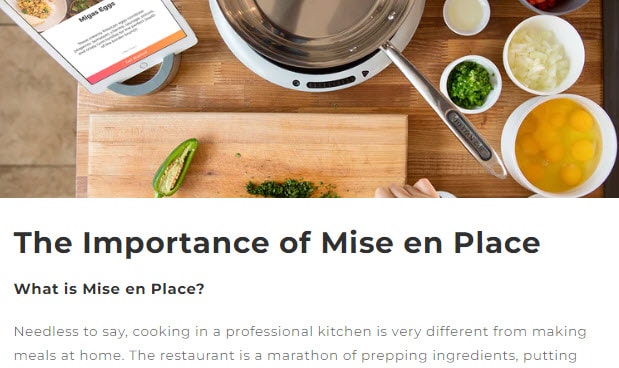
Provide practical, actionable information and to make sure the tips are easily understood and applicable to a wide range of readers. Consider including some images or videos to better illustrate your tips.
If you are an experienced cook, you can share your tips and tricks with your readers. For example, you can write a step-by-step guide on:
- How to make the perfect steak
- How to cook chicken without it drying out
- How to roast vegetables
Healthy Eating Tips
These posts provide advice and suggestions for healthy eating, including recipes, nutritional information, and tips for meal planning.
Examples of healthy eating tip post titles could be “5 Simple Tips for Eating Healthy on a Budget” or “The Power of Mindful Eating: How to Listen to Your Body”.
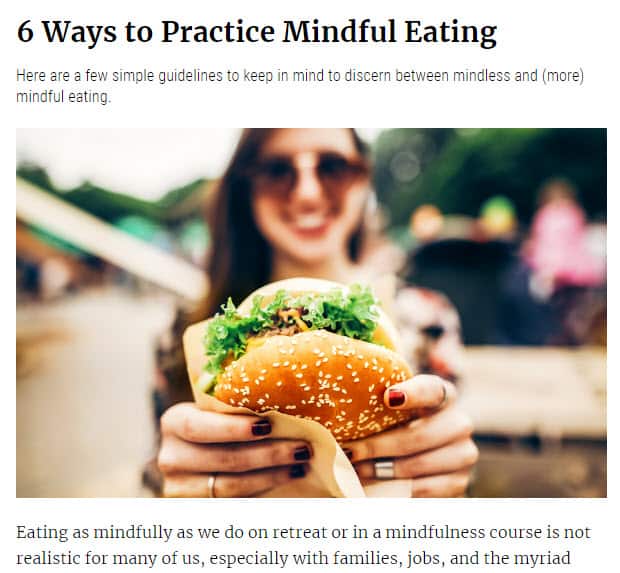
When writing healthy eating tips posts, it’s important to provide accurate, reliable information and to make sure the tips are appropriate for a wide range of readers, considering dietary restrictions and concerns. Include some recipes or meal ideas to help readers put the tips into practice.
If you are into healthy eating, you can write about:
- How to eat healthy on a budget
- How to make healthy meals more exciting
- How to stick to a healthy diet
Food Trends
A food trend post is a post that discusses the latest food trends, providing an overview and an opinion on the trend, and its potential benefits or drawbacks. These posts discuss the latest food trends, such as popular diets, culinary techniques, or food items.
Some titles for food trend posts could be “The Keto Diet Craze: Is It Right for You?” or “The Rise of Sous-vide Cooking: How to Try It at Home”.
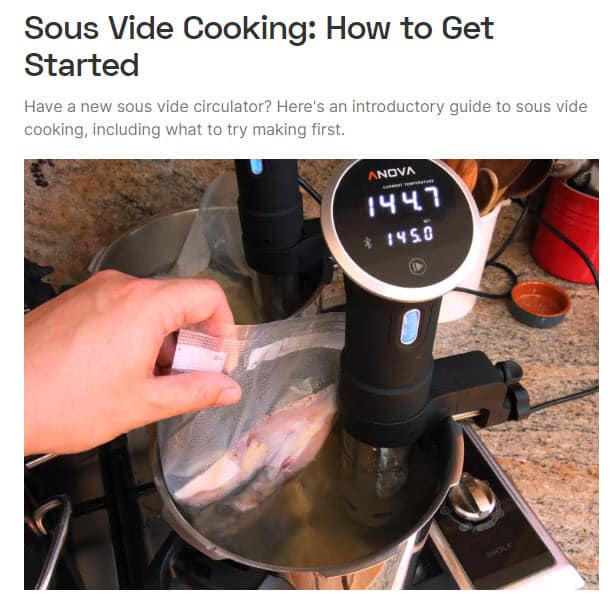
Do some research and provide accurate information. Also, include some personal experiences or insights on the trend, and how it could relate to your readers. You can write about the latest food trends, like:
- Healthy eating trends
- Food delivery trends
- Food waste trends
Product Reviews
A product review post is a post that evaluates and provides an opinion on a particular food-related product, providing information on its features, benefits, and drawbacks.
These posts review and recommend food-related products, such as kitchen gadgets, cookbooks, or food brands.
Examples of product review titles could be “The Best Air Fryers for Healthy Eating” or “Our Favorite Gluten-Free Pasta Brands”.
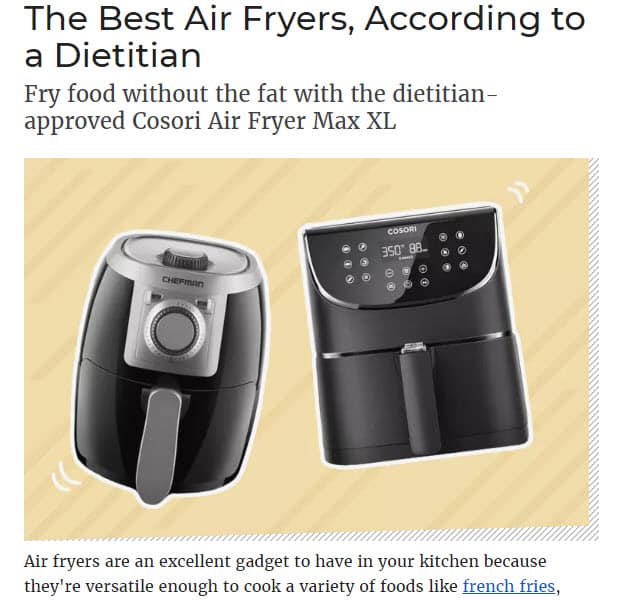
When writing a product review post, it’s important, to be honest and objective, providing both positive and negative feedback. Also, include pictures of the product and examples of how you’ve used it.
Food Culture & Travel Posts
A food culture & travel post is a post that explores the culture and history of a particular cuisine or food-related travel experiences, providing information on the local customs, ingredients, and dishes, as well as the cultural significance of food in the region.
Examples of food culture & travel titles could be “Exploring the Street Food Scene in Mumbai” or “Uncovering the History of Soul Food”.
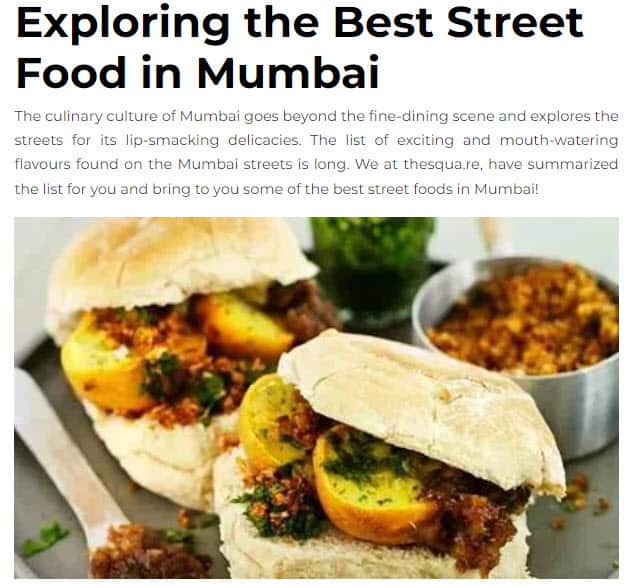
Consider including pictures and personal anecdotes to enhance the story.
If you love to travel, you can share your travel stories with your readers. You can write about:
- Your favorite restaurants in different cities
- The best street food you’ve ever had
- Your most memorable meals while traveling
Interviews
Interviews posts feature interviews with chefs, food bloggers, or other food industry professionals, discussing their background, experiences, and advice for readers.
Examples of interview post titles could be “An Interview with Top Chef Winner John Doe” or “Kitchen Wisdom: A Chat with Grandma Jane”.
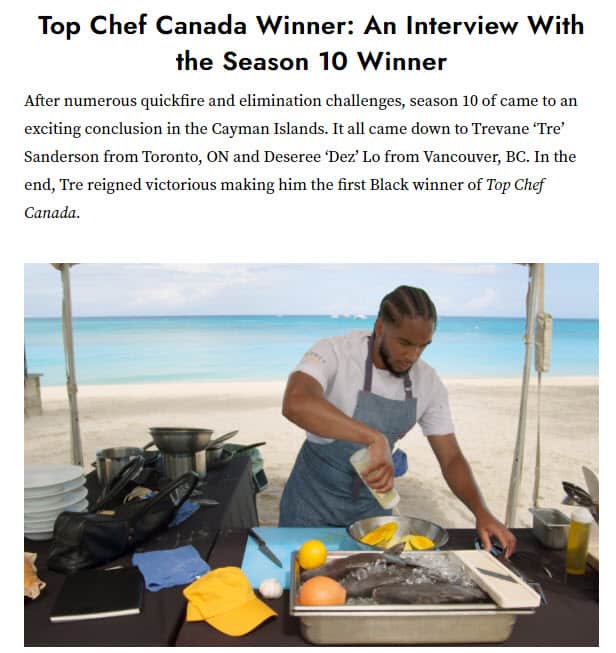
Prepare a list of relevant and interesting questions and provide a detailed, accurate account of the interviewee’s responses. Also, consider including a photograph of the person being interviewed, this way readers can relate to them better.
Q & A Posts
Q & A posts answer the most frequently asked questions from readers about cooking, recipes, food, and health.
Examples of Q&A post titles could be “The Top 10 Questions about Meal Prepping Answered” or “Your Most Common Questions about Cooking with Cast Iron Answered”.
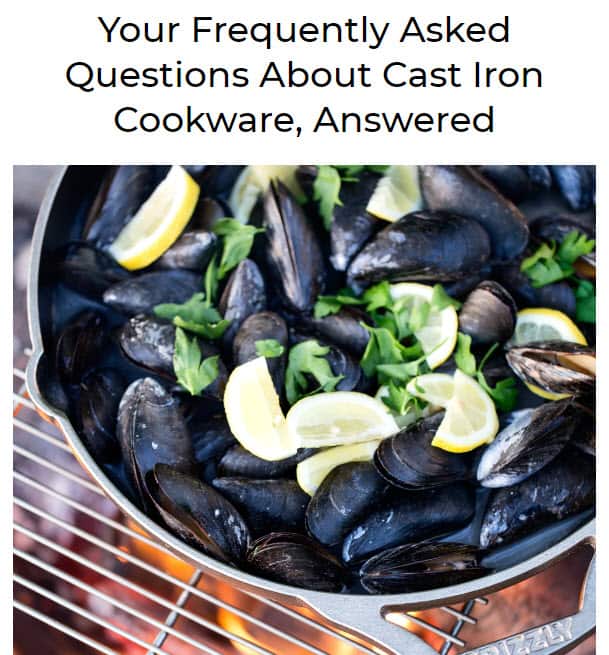
When writing a Q & A post, it’s important to research what your readers are asking and to provide clear and informative answers.
Also, consider creating a sense of conversation, encouraging readers to keep asking questions, and engaging with your content.
Run A Contest
Another great way to grow your food blog is to run a contest. People love winning prizes, so this is a great way to get more people interested in your blog. You can have a dedicated post for your contest or include it as a section in a post.

There are a few different ways you can run a contest:
- Giveaway: Give away a prize to one lucky winner.
- Recipe contest: Ask people to submit their best recipe. The winner will get a prize.
- Photo contest: Ask people to submit their best food photos.
Write 5x Faster With AI
You can write your new blog post at 5x speed using the AI writing software Jasper. I was able to write over a hundred blog articles in 3 months using Jasper. This blog article you are reading right now was written with the help of Jasper. AI will not only help you write blog posts fast but also with higher quality.
Jasper can write plagiarism-free blog content, articles, social media content, emails, and ad copy. All you have to do is provide a few inputs on what you want and Jasper will do all the hard work of creating the blog content for you. No more writer’s block.
Check out the video below to see Jasper in action:
Try Jasper for free using the links on this page and get 10,000 bonus credits you can use to start writing your first articles.
Once you sign up for Jasper I recommend you spend some time going through the tutorial videos in the Jasper Bootcamp to truly unlock the power of this amazing software.
Check out our guide on How to Write a Blog Post Fast in 15 mins Without Losing Quality for more tips to write fast.
Hire a Writer
If you don’t have the time or don’t enjoy writing, you can hire a writer to do it for you. You can hire writers from Fiverr & Upwork. It is a lot more expensive than using an AI writing tool but it will take you less of your own personal time to write the article.

4. Add Images
What will make your food blog stand out are the images. People love looking at images, especially when it comes to food.
Create Original Images
Make sure to add high-quality images to your blog posts. Ideally, you should be taking your own pictures, if you can’t afford to hire a food photographer. You don’t need an expensive camera. You can just use your smartphone to take nice pictures.
Ensure Proper Lighting
When taking pictures, make sure there is enough light. The best time to take food photos is during daylight.
If you are taking pictures at night, you can use artificial lighting like lamps or fairy lights.
Learn Proper Food Staging
Food staging is the process of arranging food appealingly before taking a picture. There are a few things you need to keep in mind when staging food:
Composition: How you arrange the food on the plate will make a big difference in the final picture. Play around with the arrangement until you are happy with it.
Colors: Try to use a variety of colors in your pictures. This will make the picture more appetizing and visually appealing.
Garnish: Garnish your food with things like herbs, spices, or edible flowers. This will make the dish look more attractive.
Use Props
Props are objects that you use in your pictures to make them more interesting. Some common props used in food photography are:
Dishes: You can use different types of dishes, like plates, bowls, or glasses, to serve the food.
Utensils: Utensils like forks, knives, and spoons can be used as props.
Linens: Tablecloths, napkins, and towels can be used to add color and texture to your pictures.
Glassware: You can use glasses, mason jars, or bottles to serve drinks.
Using Stock Photos
If for some reason you can’t take your own photos, you can also use stock photos from sites like:
Free Options: Pixabay, Pexels, Upsplash
Paid Options: Deposit Photos, Shutterstock, iStock, Getty Images, 123rf.
Editing Photos
After taking the pictures, you will need to edit them to make them look even better. You can edit your images in Canva. If you get Canva Pro, you will have access to over a million stock photos along with their pro editing features.

5. Include Videos
Videos are a great way to add more value to your blog posts. You can use videos to show people how to make recipes or do food reviews.
You don’t need to be a professional videographer to make videos. You can just use your smartphone to record videos.
6. Promote Your Food Blog
Now that you have published your blog post, it’s time to start promoting it to get blog traffic. There are several ways to promote your content:
Search Engine Optimization (SEO)
The best traffic you can get is traffic from search engines like Google and Bing. And the best way to get traffic from search engines is to do Search Engine Optimization (SEO).
Many factors go into SEO, and it can be a bit confusing to figure out where to start. You can master the more advanced SEO tactics by checking out our SEO Resources.
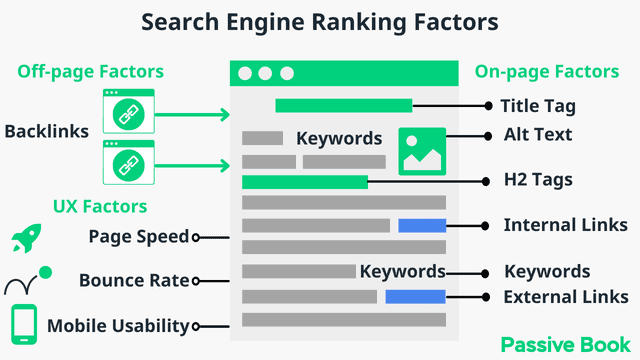
You can ensure you get the basics of SEO right, by completing the recommendations given by the RankMath plugin.
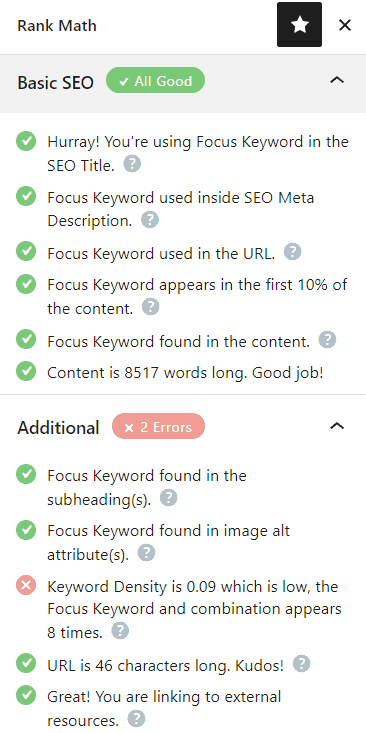
Email Marketing
Email marketing is a great way to promote your food blog and build a relationship with your audience.
You can start building your email list by creating a sign-up form on your website. You can then promote your blog posts to your email list. Email marketing will help you generate traffic on demand by sending a single email to your subscribers.

You can use the Thrive Leads plugin to build opt-in forms to collect email addresses. You can then connect the opt-in form to an email marketing service like Active Campaign to send out the emails.
Check out our Email Marketing resources to learn more.
Social Media Marketing
Social media marketing is another great way to promote your food blog. You can share your blog post on social media sites like Twitter, Facebook, and Instagram. You will be able to drive a lot of traffic to your food blog if you focus your efforts on Pinterest. This is because Pinterest is a search engine and people use it to find recipes, tips, and ideas related to food.
Guest blogging
Guest blogging is when you write a blog post for another person’s website.
You can reach a whole new audience by guest blogging on popular food blogs in your niche. And since you will be writing about topics that you are passionate about, it will be easy for you to produce high-quality content.
You can promote your blog and link back to your site from the author bio.

Blog Comments
Blog comments are a great way to engage with other food bloggers and build relationships. When you leave a comment on someone else’s blog, make sure to leave your website URL so that people can find your food blog.
7. Monetize & Make Money
Once you start driving enough traffic to your blog, it is time to start thinking of ways to monetize your blog and make money.
There are many ways you can make money from your food blog. If you’re looking to make some extra cash, or even turn your blog into a full-time business, then these monetization strategies will help you do just that:
Advertising
One way to monetize your food blog is by selling advertising space on your website. You can do this by signing up for a program ad network. Once you’re approved, you can start displaying ads on your website and earning money whenever someone clicks on them.
To start advertising on your blog, you can sign up for an ad network like Ezoic (they pay more than Google Adsense). When your blog starts getting more than 100,000 page views a month you can monetize with Adthrive.
| Ad Network | Earnings Per 1K Impressions (EPM) | Monthly Traffic Requirement |
|---|---|---|
| Ad Thrive | $13 | 100,000 |
| Ezoic | $3 | 10,000 |
| Media.net | $1 | – |
| Google Adsense | $1 | – |
Affiliate marketing
Another way to monetize your blog is by using affiliate marketing. This is where you promote other people’s products and services on your blog and earn a commission whenever someone buys something through your affiliate link.
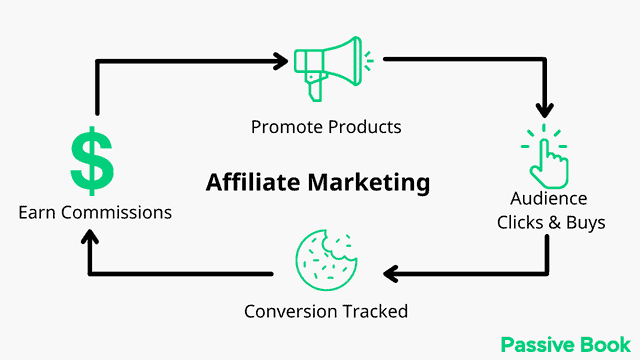
You can find affiliate programs for food-related products on ShareASale, CJ Affiliate, Amazon Associates, and Impact Radius.
Product sales
If you have a physical product related to food, you can sell it on your blog. For example, if you are a chef, you can sell your cookbook on your blog.
You can also create digital products like eBooks, online courses, or meal plans and sell them on your blog.
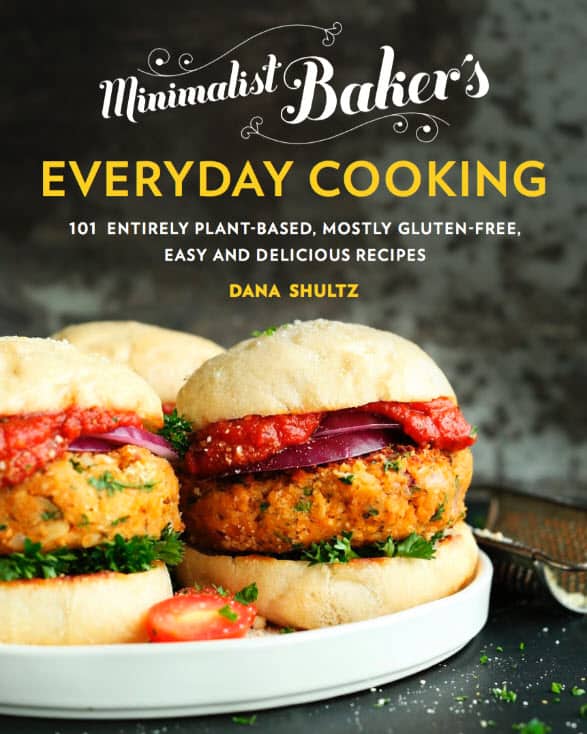
Sponsored Posts
Sponsored posts are when a brand pays you to write a blog post about their product or service. Sponsored content is a great way to monetize your blog because you can charge a high price for sponsored posts.
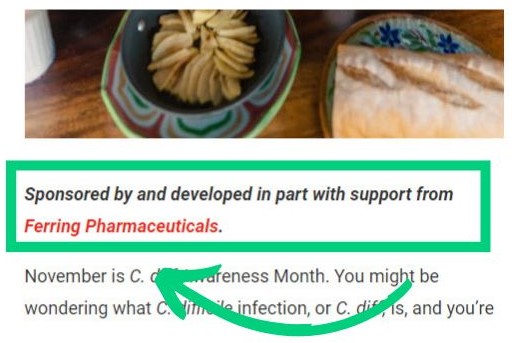
You can find brands that are looking to sponsor blog posts on sites like IZEA, TapInfluence, and Linq.
Sell Merchandise
If you want to make more money from your food blog, you can sell merchandise or kitchen items. You can sell:
- T-shirts, Mugs & Tote bags
- Aprons
- Pans & Kitchen Utensils
- Ingredients
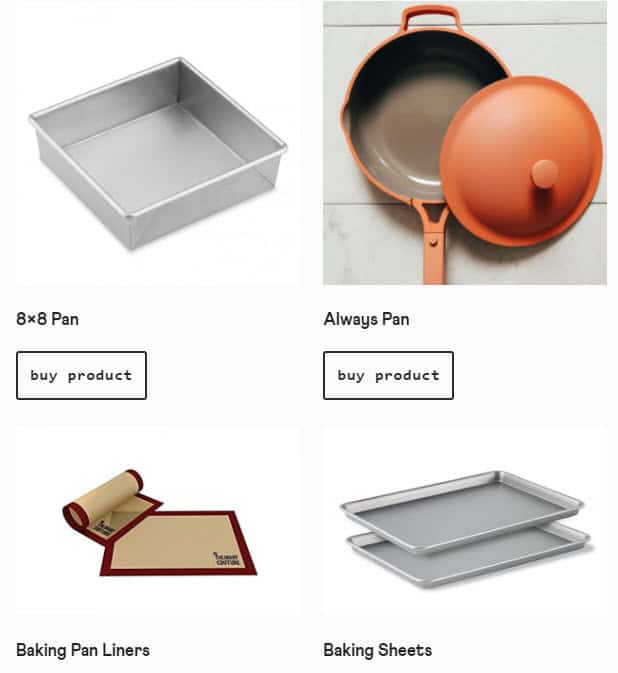
Offer Consulting Services
If you are an expert in the food industry, you can offer your consulting services to businesses. You can help them with:
- Menu development
- Recipe development
- Food trends
Create A Membership Site
Another great way to make money from your food blog is to create a membership site. With a membership site, people will pay a monthly fee to access exclusive content that they can’t find anywhere else.
This content can include:
- Recipes
- How-to videos
- Exclusive interviews
- Meal Plans
An example of a website that does this is 40 Aprons:

FAQ
Here are a few frequently asked questions:
Do food bloggers make money?
Yes, food bloggers can make money through advertising, affiliate marketing, product sales, and other forms of monetization.
How much do food bloggers make?
The amount of money that food bloggers make depends on many factors such as traffic, niche, and monetization methods. Food bloggers can make anywhere between $8 to $14 for every 1000 page views.
How can I start a food blog for free?
You can start a food blog for free by using a platform like WordPress.com or Blogger. However, if you want to make money from your blog, it is recommended that you use a self-hosted WordPress.org site as this will give you more control and flexibility over your blog. Just follow the steps in this guide to start a blog with self-hosted Wordpress.
How do I choose a food blog name?
When choosing a name for your food blog, you should pick something catchy, unique, and easy to remember. You should also make sure that the name is available as a domain name so that you can create a website for your blog.
Is it worth starting a food blog?
Yes, it is definitely worth starting a food blog. This is because you can share your passion for food with the world and also make money from your blog.
What Next?
Are you ready to become a food blogger?
If you have any questions as you set up your new food blog, leave a comment below so we can help you out.
Starting a food blog is a great way to share your passion for food with the world and make money from your blog. In this guide, we have covered everything you need to know about starting a food blog and making money online. We have also provided several tips and resources that will help you get started.
So what are you waiting for?
Have you started your food blog yet? What type of food blog are you going to start? Let us know in the comments.
Share this post with your friends & followers:
